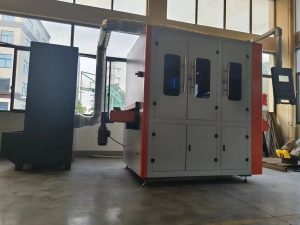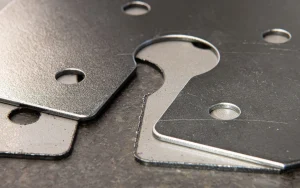Introduction
In the competitive world of modern manufacturing, automated deburring machines are transforming how industries handle the essential process of deburring. These machines improve the speed and precision of deburring reduce operational costs and ensure consistent high-quality results across various sectors, from automotive to aerospace. Automated deburring systems help manufacturers stay competitive, enhance productivity, and minimize labor costs.

Benefits of Automated Deburring Machines in Manufacturing
1. Increased Speed and Production Throughput
Automated deburring machines allow for faster processing speeds, enabling manufacturers to produce more parts in less time. With the ability to continuously run without breaks or manual intervention, automated systems significantly boost production throughput and help manufacturers meet tight deadlines without sacrificing quality.
2. Enhanced Consistency and Precision
One of the primary advantages of automated systems is their ability to deliver consistent results. With precise control systems, automated deburring ensures uniformity across thousands of parts, which is critical in high-precision industries such as aerospace, automotive, and medical device manufacturing. These systems eliminate human error, ensuring that each part meets stringent quality standards.
3. Lower Labor Costs
Automating the deburring process reduces the need for manual labor, which in turn leads to lower labor costs. Workers can be reassigned to more complex, value-added tasks, increasing overall workplace efficiency. In the long run, automation not only saves money but also boosts the overall profitability of manufacturing operations.
4. Improved Worker Safety
Automated deburring systems eliminate the risks associated with manual handling of parts. The use of robotic arms and automated tools helps to reduce human exposure to sharp edges and other hazardous materials, ensuring a safer work environment. With these systems in place, manufacturers can significantly reduce workplace injuries and the associated costs.
5. Reduced Material Waste
Automated deburring machines are optimized to remove only the necessary material, ensuring minimal material waste. This is particularly important in industries where high-quality materials such as metals, plastics, or ceramics are used. By using only the necessary amount of material for deburring, manufacturers can reduce production costs and enhance their environmental sustainability.
6. Flexibility and Versatility
Modern automated deburring systems are highly versatile and capable of handling a wide variety of materials and part designs. This flexibility allows manufacturers to accommodate both mass production and custom or low-volume production runs. Whether deburring intricate electronic components or large automotive parts, automated systems can adjust to meet the needs of various industries.
Key Industries Benefiting from Automated Deburring Machines
Automated metal deburring machines are increasingly being used across a wide range of industries where high precision and quality are essential. Some of the key sectors benefiting from these systems include:
Automotive Manufacturing
In the automotive industry, automated deburring machines are used to process engine components, brake systems, and other parts that require high precision and a smooth finish. These machines help automotive manufacturers improve production efficiency and reduce errors in critical components.
Aerospace
The aerospace sector demands extreme precision and attention to detail. Automated deburring is essential for components like turbine blades, airframes, and other intricate parts. By automating the deburring process, aerospace manufacturers can meet the high-quality standards required for safety and performance.
Medical Devices
Manufacturers of medical devices, such as surgical instruments, implants, and medical components, rely on automated deburring to ensure their products meet the highest standards of quality and safety. Precision is critical in medical device manufacturing, and automated deburring helps eliminate inconsistencies and defects in parts that could affect patient health.
Electronics
In the electronics industry, automated deburring systems are used to clean up circuit boards, connectors, and housings. The precision and speed of automated machines ensure that delicate electronic components are handled without damage, while maintaining high standards for quality.

Conclusion
Automated deburring machines have revolutionized the manufacturing process by enhancing speed, precision, and cost-efficiency. These systems are key in industries like automotive, aerospace, and medical devices, where quality and safety are paramount. By improving throughput, consistency, and worker safety, automated deburring helps manufacturers stay competitive, reduce operational costs, and enhance overall productivity.
As industries continue to evolve and demand higher-quality products, the role of automated deburring machines in improving manufacturing efficiency will only grow. Companies that invest in automation are better positioned to maintain their market leadership, reduce waste, and improve their bottom line.
